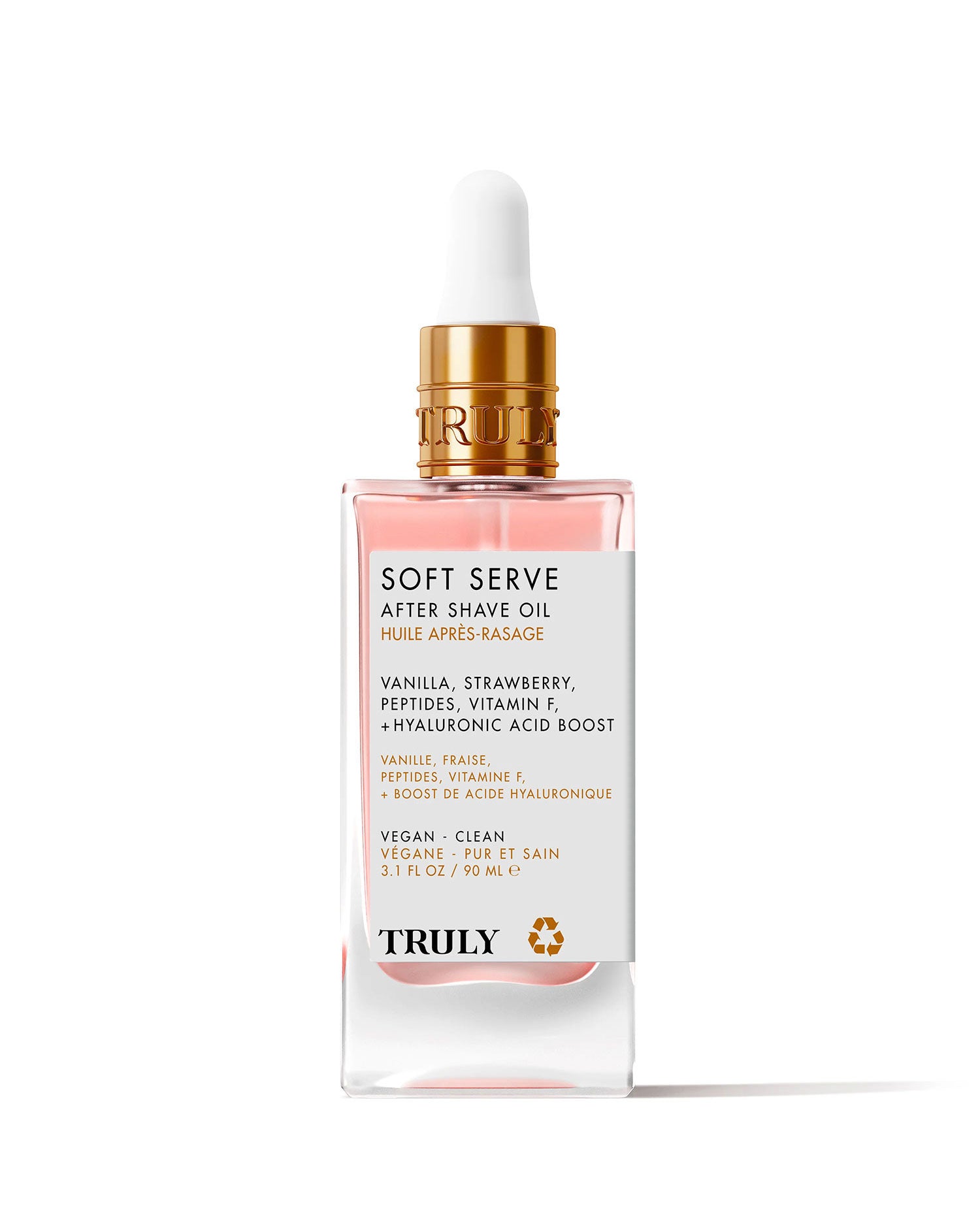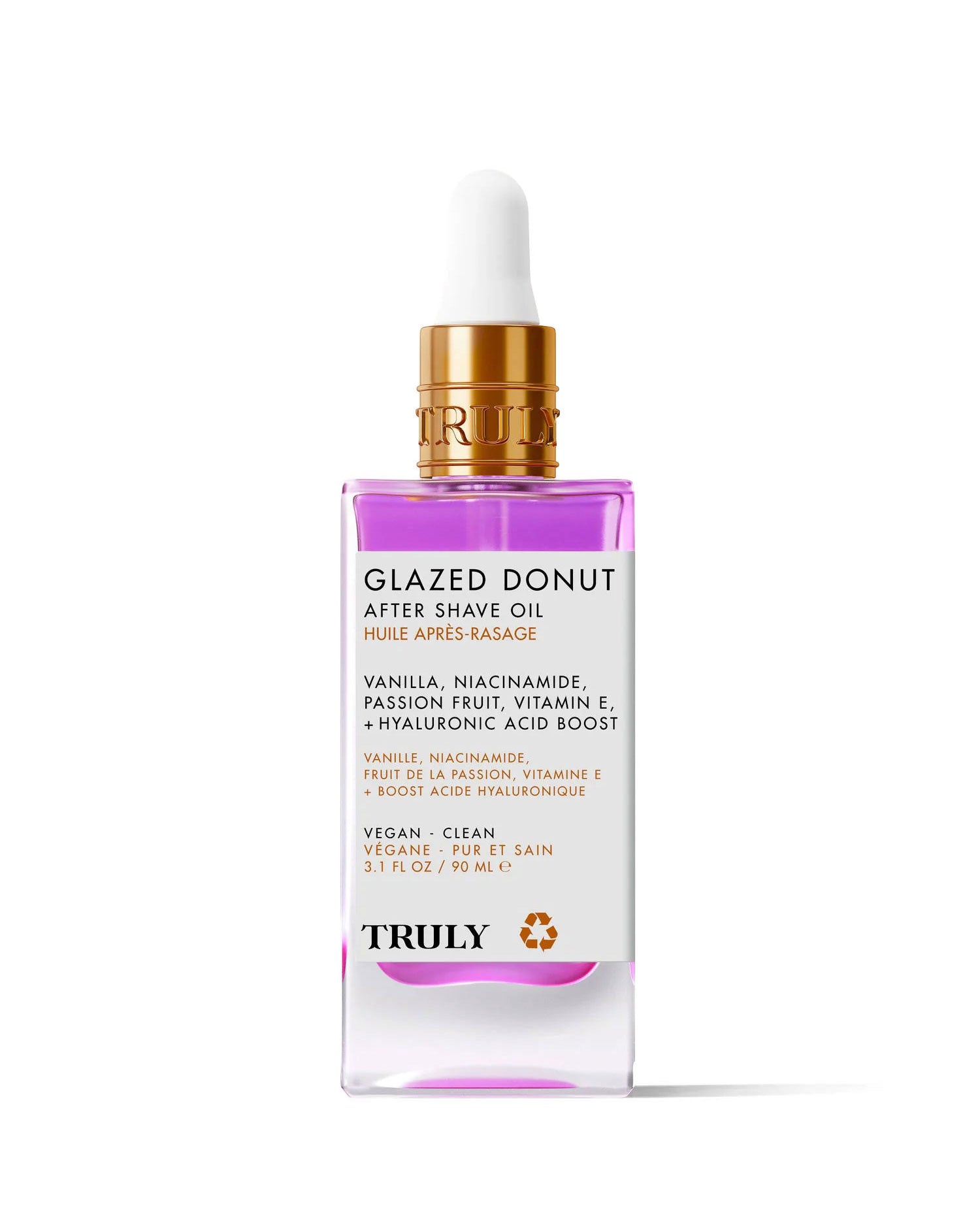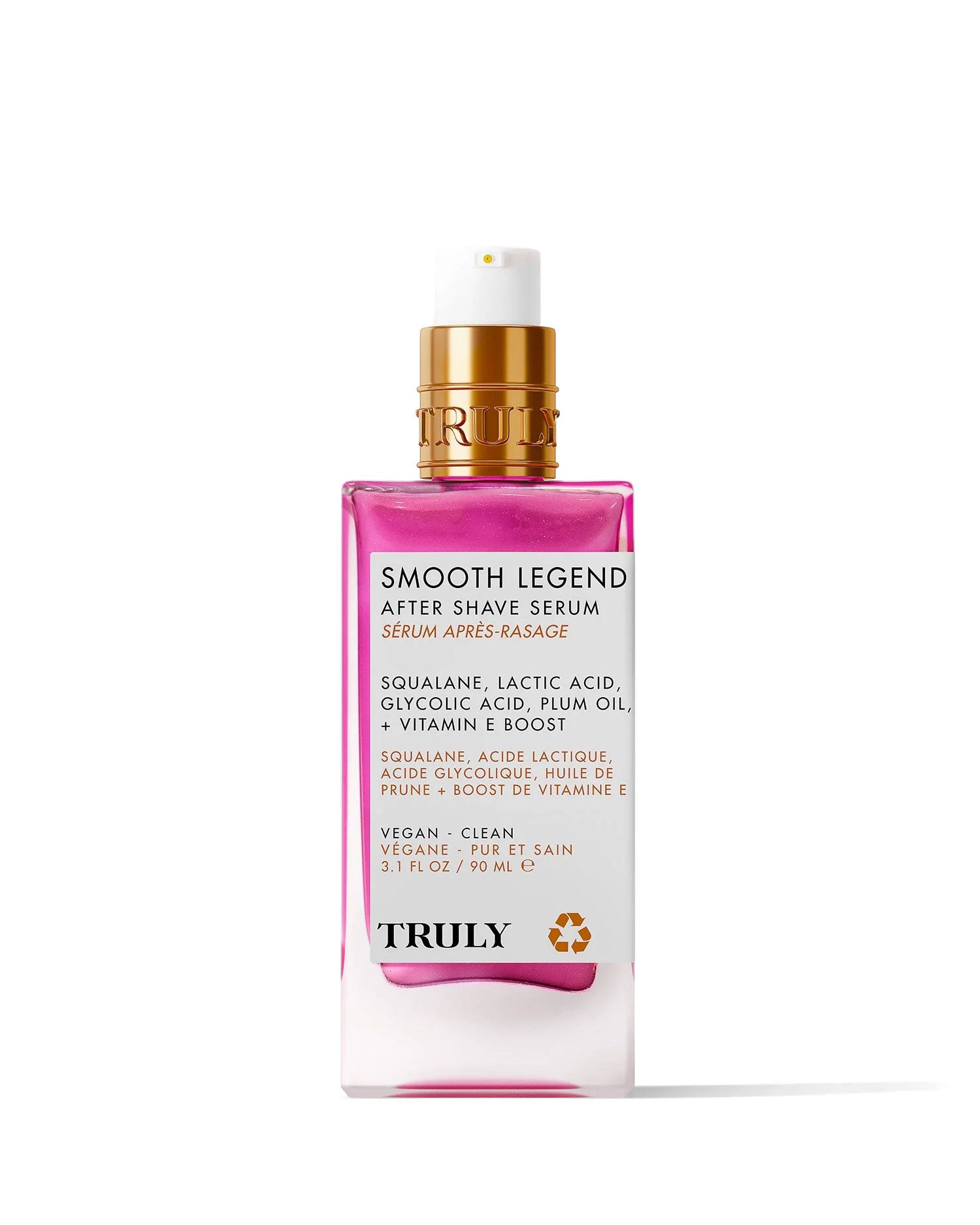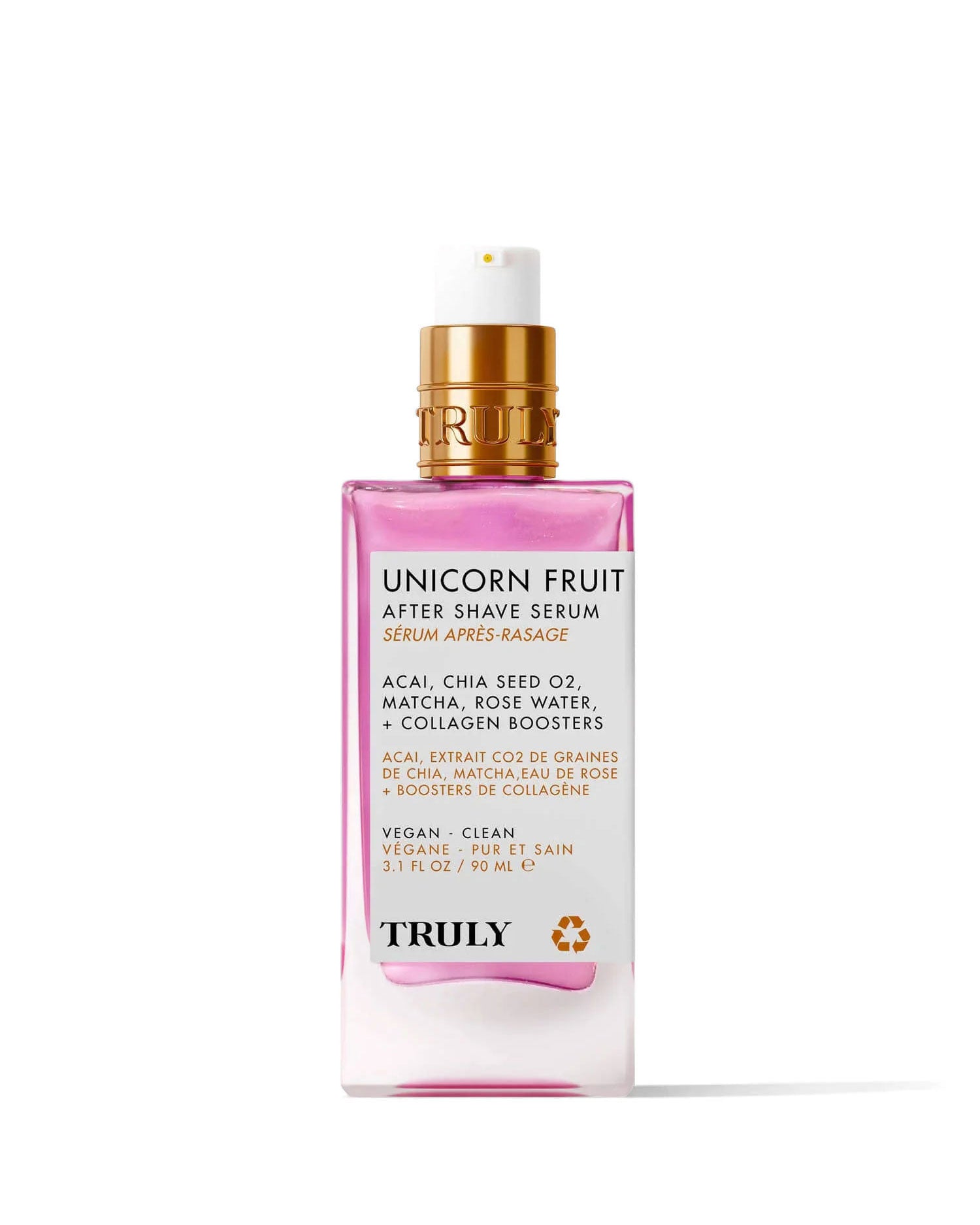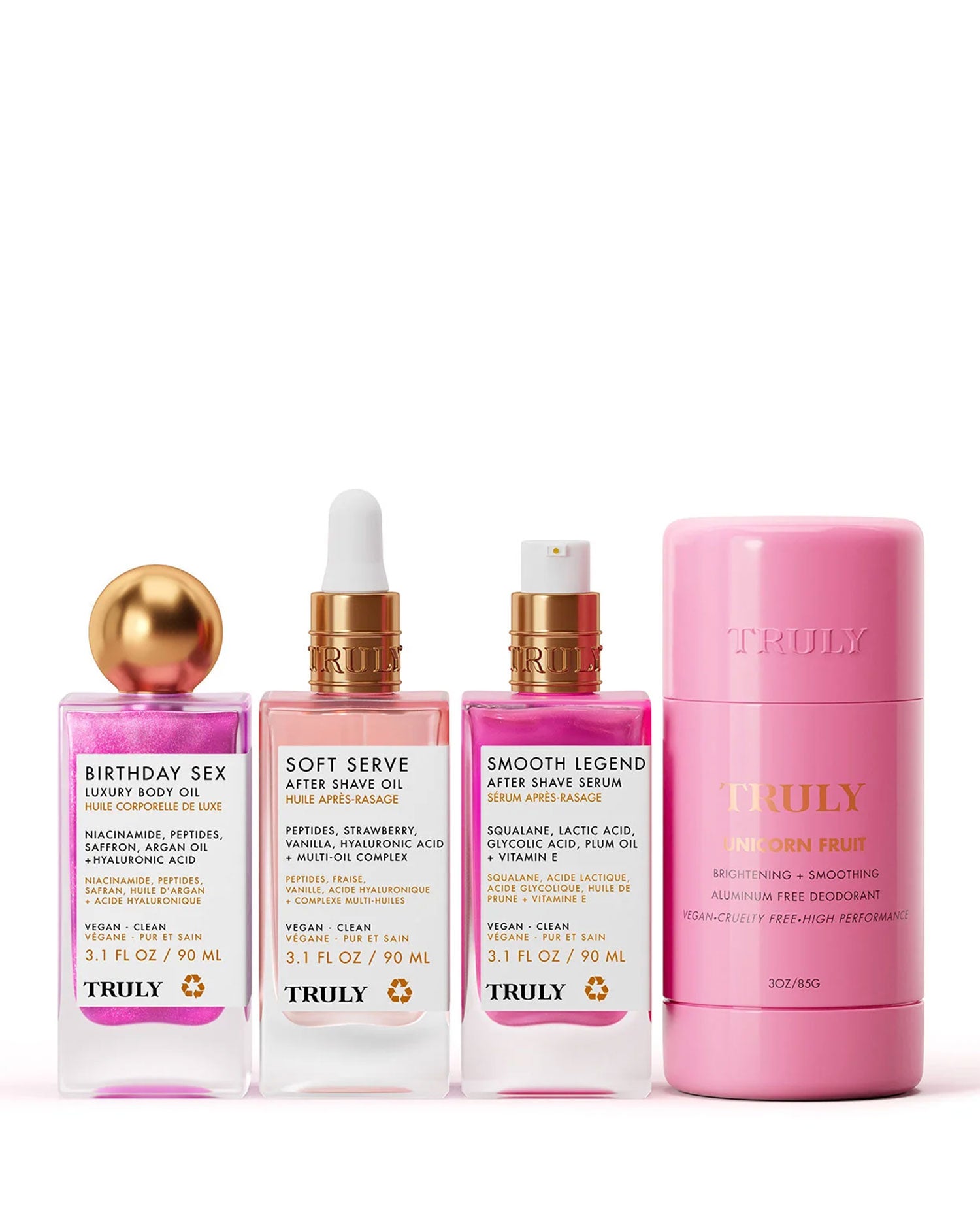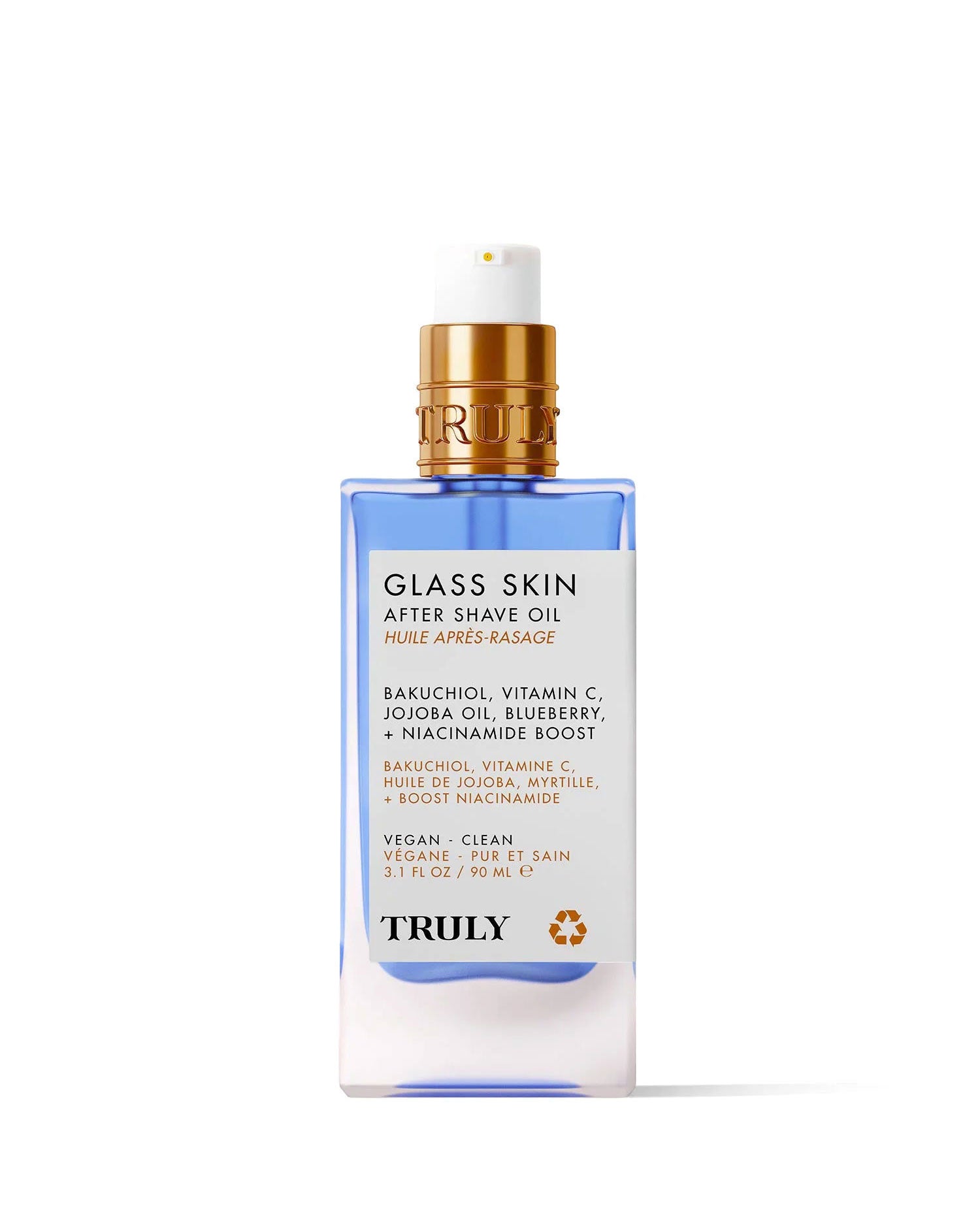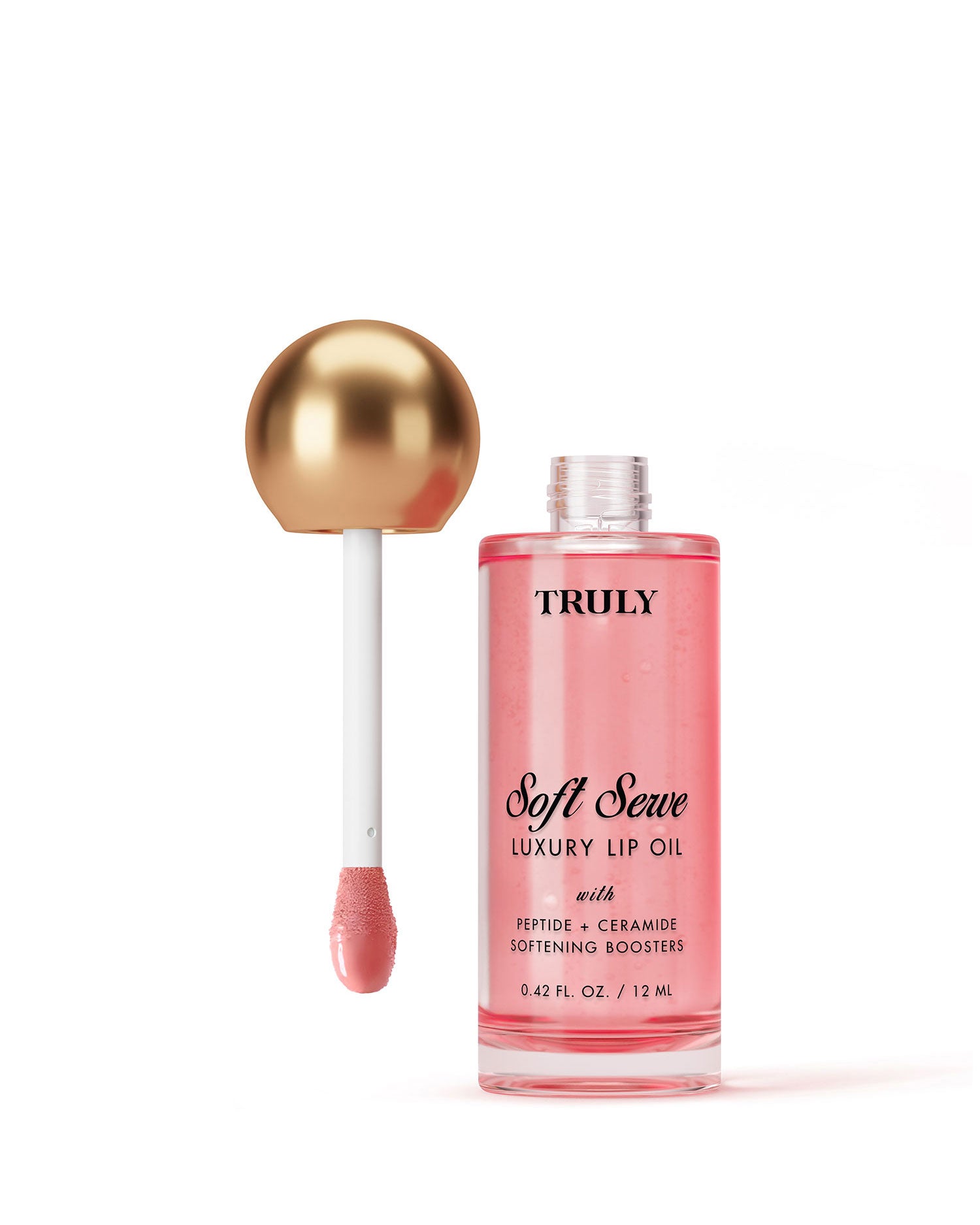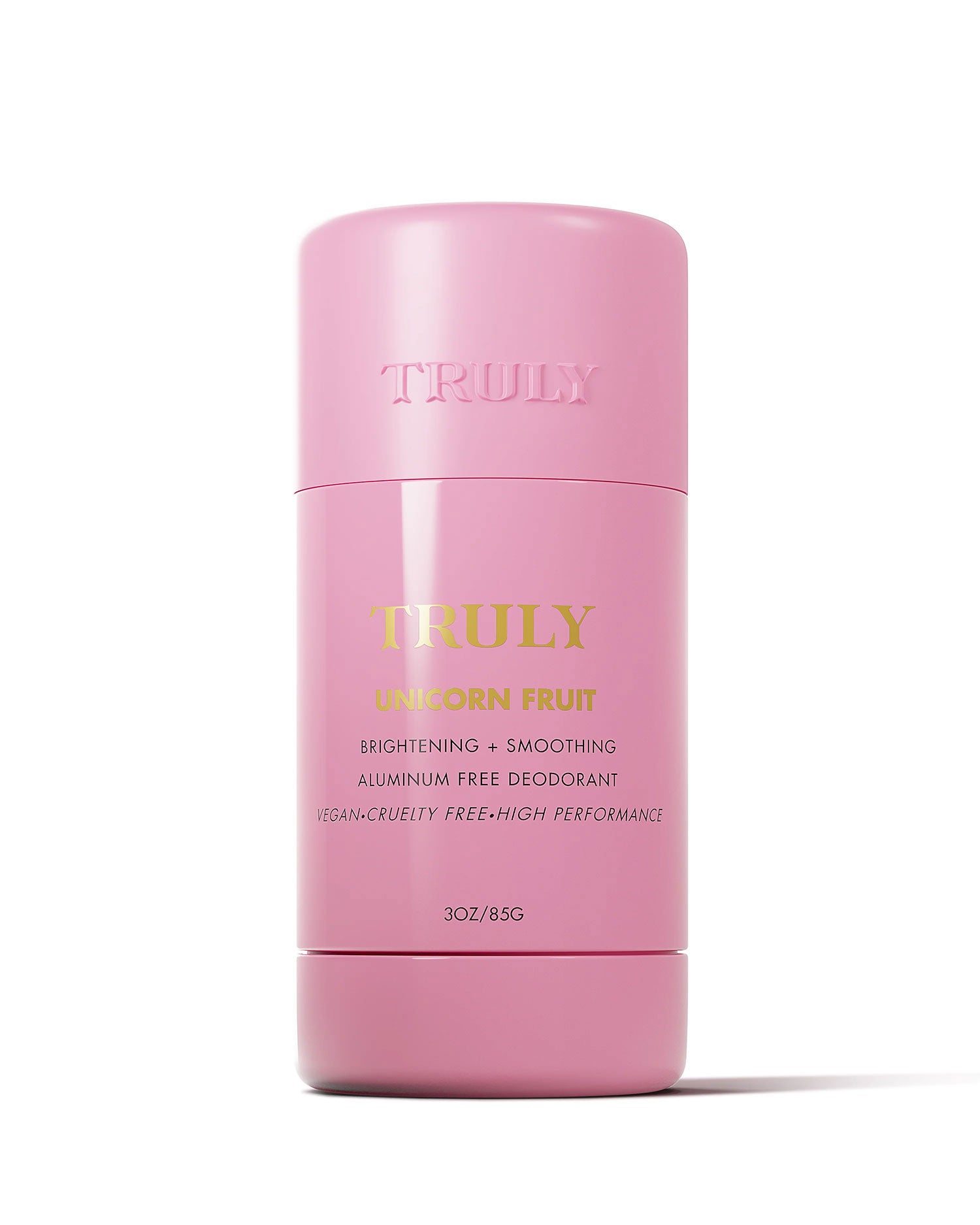Sagging Skin: Your Ultimate Guide
December 22, 2023
By: Truly Beauty
Aging, sun exposure, and genetics all play a role in sagging skin. Fortunately, there are plenty of topical skin tightening treatments for skin sagging. Are you dealing with sagging skin face? Sagging skin under chin? Or perhaps you’re experiencing sagging on other areas of your body.
This guide will help you understand the causes of sagging skin along with what you can do about it and the best preventative steps. You’ll also find some featured skincare products for tightening loose skin.
What is Sagging Skin?
Sagging skin refers to loose skin that has lost its firmness and elasticity. It tends to show up as loss of definition, particularly around the neck and jawline. Factors such as sun exposure, genetics, and lifestyle choices can accelerate skin sagging. Rapid weight loss and unhealthy habits like smoking and poor nutrition can also contribute to sagging skin, affecting areas like the face, neck, arms, abdomen, and thighs.
While aging is inevitable, adopting a healthy lifestyle, protecting skin from sun damage, and maintaining a stable weight can help slow down the progression of sagging skin. Cosmetic procedures and skincare products may also offer solutions to address or minimize its appearance.
What Causes Wrinkles and Sagging Skin?
One of the main causes of wrinkles and sagging skin is age. As we age, skin loses collagen and elastin, the supportive connective tissue that makes skin appear firm, smooth, and plump. Facial muscles also tend to weaken with age which can result in loose skin.
Aside from the natural aging process, sun exposure is a leading culprit of sagging skin on the face and neck. Even sudden weight loss can cause sagging skin on the arms, stomach, and other areas of your body. Here’s a breakdown of the most common causes of sagging skin.
Aging
As people age, the production of collagen and elastin, proteins responsible for skin structure and elasticity, decreases. This leads to a loss of skin firmness and the formation of wrinkles.
Collagen is a protein that provides structural support to the skin. As collagen production decreases with age, the skin becomes less elastic, leading to sagging. Elastin is another protein that, as the name suggests, imparts elasticity to the skin. Elastin fibers allow the skin to stretch and recoil. Like collagen, elastin production declines with age, affecting the skin’s ability to bounce back which often results in wrinkles and sagging.
Sun Exposure
Sun exposure contributes to the loss of skin elasticity and the development of sagging skin primarily through the effects of ultraviolet (UV) radiation. UV rays can penetrate the skin and reach the deeper layers, where collagen is located. Prolonged exposure to UV rays leads to the breakdown of collagen fibers through a process called collagen degradation. As collagen diminishes, the skin loses its elasticity, resulting in saggy skin.
Rapid Weight Loss
Being overweight can cause damage to your skin’s collagen and elastin fibers. As a result, it’s harder for skin to snap back when you lose weight. If you lose weight rapidly, sagging skin is more likely to occur. That being said, your skin may bounce back more efficiently if you’re younger. Your age at the time of weight loss can play a significant role in the level of skin sagging.
Repetitive Facial Expressions
Facial movements and expressions, such as squinting, frowning, or smiling, can lead to the formation of dynamic wrinkles over time. When specific facial muscles contract repeatedly due to expressions, it creates a pattern of movement in the skin. Over time, this consistent muscle action, combined with the natural aging process, results in the development of fine lines and wrinkles.
The repetitive moving and stretching of the skin can also lead to the breakdown of collagen and elastin fibers, the proteins responsible for skin structure and elasticity, which can cause skin sagging.
Pregnancy
Experiencing loose skin after pregnancy is common—especially in women who carry twins or triplets. As the baby or babies grow during pregnancy, the skin of the abdomen stretches to accommodate the increasing size. The stretching of the skin during pregnancy can affect the connective tissues, including collagen and elastin fibers. Hormonal changes during pregnancy, specifically the increased production of hormones like estrogen, can also impact the skin’s elasticity.
What Vitamin Deficiency Causes Sagging Skin?
If you’re dealing with sagging skin on face or body, a vitamin deficiency might be to blame. Vitamin C is one of them. When you lack vitamin C, collagen production plummets, causing thinning, loose skin. Vitamin E is another one. Vitamin E deficiency affects lipid protection which can lead to tissue damage by free radicals, potentially accelerating sagging.
If you’re experiencing sagging skin, you may also have a zinc deficiency. When you lack zinc, collagen renewal and tissue regeneration are impaired. This can contribute to fine lines, wrinkles, and sagging skin.
To prevent sagging skin, make sure you fill your daily diet with plenty of antioxidants and nutrients to promote skin health and avoid aging skin.
How to Tighten Sagging Skin on Face
If you’re concerned about facial skin sagging, you may want to consider viable treatment options. Is it possible to tighten loose skin on face? Certain topical treatments and cosmetic procedures can help to tighten sagging skin. Here are some of the best treatments for saggy skin on your face.
1: Retinol
Whether you’re dealing with jowls or sagging neck skin, retinol is your holy grail for reviving loose skin. Retinol is a type of retinoid that increases collagen production and speeds up cell turnover to give skin a smoother, firmer look and feel. Even studies show how retinol treatments stimulate collagen production in mature skin, helping to firm skin and decrease the appearance of wrinkles.
This vitamin A derivative is one of the best topical treatments for combating signs of aging. Plus, it offers other benefits such as treating acne, improving skin tone, and fixing textural issues.
2: Facial Exercises
Facial exercises can help improve muscle tone and elasticity, potentially reducing the appearance of sagging skin. Keep in mind that while some people find facial exercises beneficial, scientific evidence supporting their effectiveness is limited. Here are some facial exercises that are commonly suggested to help tone your facial muscles:
Sculpt your cheeks: Smile as widely as you can as long as it's still comfortable. Hold your smile for several seconds and then relax. Repeat 10 times.
Double chin: Tilt your head back and look toward straight up towards the ceiling. Pucker your lips, as if you're trying to kiss the ceiling. Hold for several seconds and repeat.
Define your jawline: Gently tilt your head back and look upwards. Bring your lower lip over your upper lip as far as possible. Hold for a few seconds and repeat 10-12 times.
3: Topical Antioxidants
You already know that deficiencies in vitamins C and E can contribute to sagging skin. But what happens if you apply them directly to your skin? Antioxidants like vitamins A, C, and E can all benefit your skin health. They help neutralize free radicals that can damage collagen and elastin fibers in the skin. What’s more, certain antioxidants like vitamin C are known to stimulate collagen synthesis. By promoting collagen production, antioxidants may contribute to improving the appearance of sagging skin.
You’ll find antioxidants in a range of skincare products. If you can’t find products with the vitamins listed above, look for nourishing oils like grapeseed oil and jojoba oil which contain natural antioxidants.
4: Microneedling
Microneedling is the process of piercing the skin with tiny, sterilized needles to trigger the body’s wound healing response and the release of growth factors that boost skin cell regeneration. These all work to increase the production of collagen and elastin in the skin. When this happens, skin becomes more taut. That being said, you may need several sessions before you see visible results. Consult your dermatologist to discuss whether this might be an effective treatment for you and any potential side effects.
5: Laser Therapy
Laser treatment can be effective for tightening sagging skin. Various lasers, such as fractional or non-ablative types, contribute to collagen synthesis, enhancing skin firmness and texture. Results may vary based on individual factors and the specific laser used.
Consult with a dermatologist or skincare professional is crucial to assess skin condition, discuss goals, and determine the most suitable laser treatment. While laser therapy is effective for mild to moderate skin laxity, other options like radiofrequency and ultrasound-based treatments also address collagen stimulation and skin tightening based on individual needs and preferences.
Can Collagen Reverse Skin Sagging?
Collagen is the protein responsible for giving skin a tight and taut appearance. However, as we age, natural collagen production declines which can lead to sagging skin.
Collagen supplementation and topical use of collagen skincare can help to boost your natural collagen production and may, ultimately, reverse skin sagging.
How to Prevent Sagging Skin
There are a few ways you can prevent skin from sagging. Most importantly, be sure to protect your skin when outside by wearing a broad-spectrum sunscreen with SPF 30 or higher. Since UV exposure is one of the leading causes of premature aging, it’s an easy preventative step to take to keep skin firm.
Next, invest in antioxidant serums (e.g vitamin C, vitamin E, niacinamide) which will help to limit free radical damage, maximize the effects of your daily sunscreen, and prevent skin sagging. Using retinoid products is also helpful for improving collagen production and swerving signs of aging.
Alongside all of this, make sure you’re living a healthy lifestyle. Get regular exercise, eat a diet rich in fruits and vegetables, and get plenty of sleep. These will all make a huge difference.
How to Lose Weight Without Sagging Skin
The best way to lose weight without sagging skin is by taking a gradual and balanced approach to weight loss. Firstly, focus on a sustainable diet that includes nutrient-dense foods, lean proteins, and adequate hydration. Aim for a moderate calorie deficit, losing about 1-2 pounds per week to allow your skin to adjust gradually. Then incorporate strength training exercises into your routine to build muscle, which can help improve skin elasticity.
Finally, avoid crash diets and prioritize a lifestyle change for lasting results. To avoid sagging skin from weight loss, it’s always best to lose weight gradually. If you lose weight too quickly, it can affect skin elasticity and ultimately result in loose, sagging skin.
Photo by cottonbro studio, Pexels













